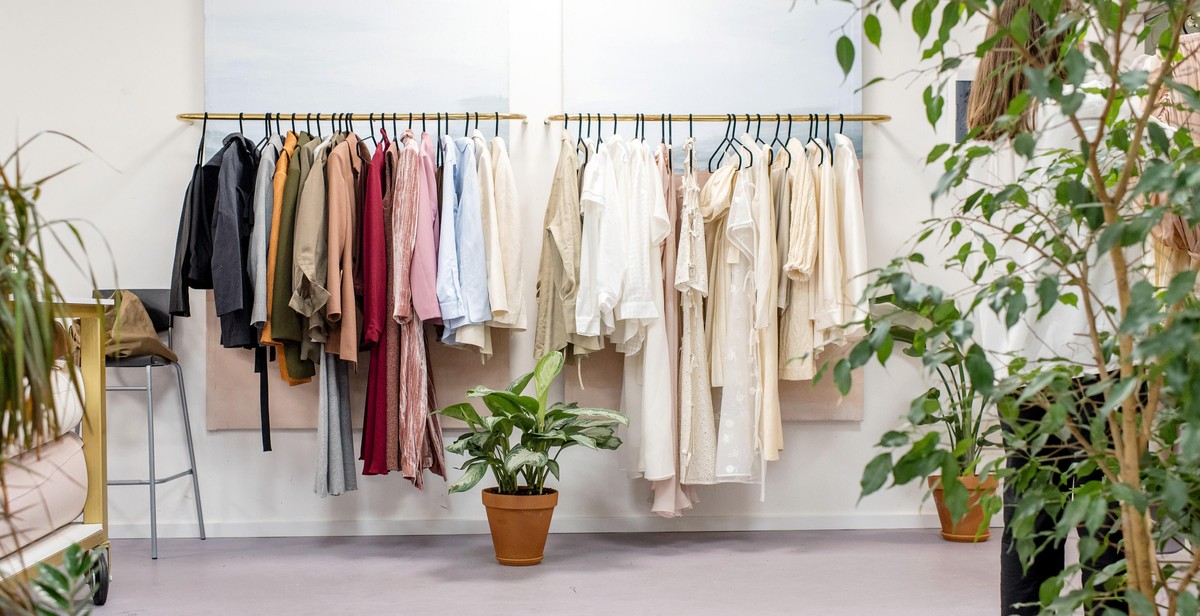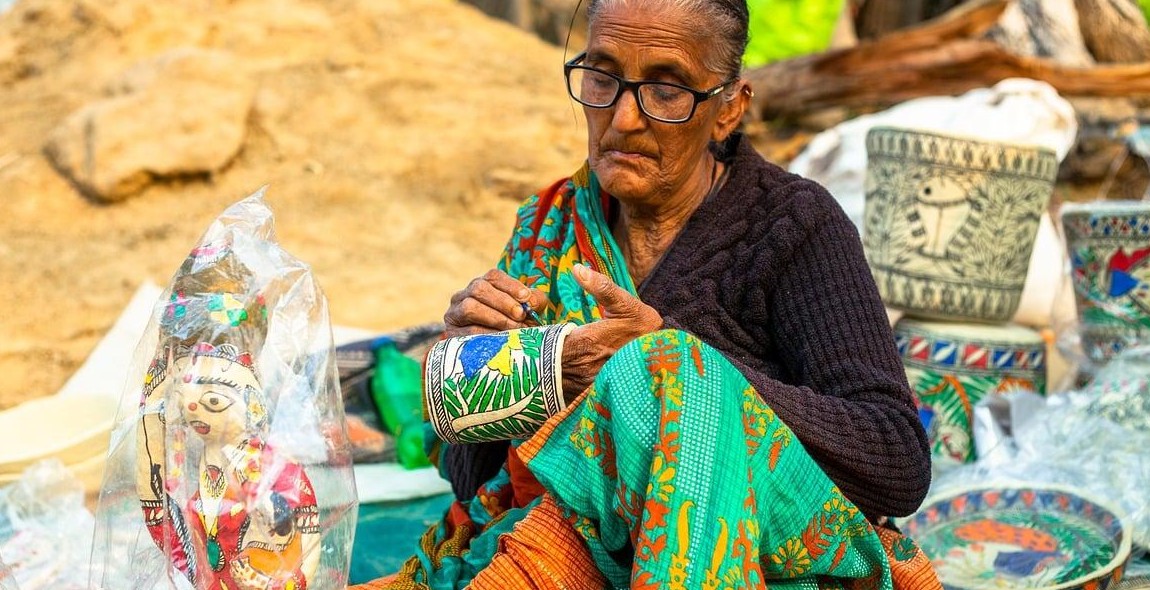Introduction: How to Start a Sustainable Fashion Journey
Sustainable fashion has become a buzzword in recent years, and for good reason. The fashion industry is one of the largest polluters in the world, and as consumers, we have the power to make a difference. By choosing to support sustainable and ethical fashion brands, we can reduce our carbon footprint and contribute to a better future for our planet.
Why Start a Sustainable Fashion Journey?
Starting a sustainable fashion journey is not only good for the environment, but it’s also beneficial for your wallet and your personal style. By investing in high-quality, timeless pieces, you can create a wardrobe that lasts longer and saves you money in the long run. Plus, sustainable fashion brands often prioritize fair labor practices and use eco-friendly materials, which means you can feel good about the clothes you’re wearing.
In this article, we’ll dive into the world of sustainable fashion and provide you with actionable tips on how to start your own sustainable fashion journey. From understanding sustainable fashion practices to building a sustainable wardrobe, we’ve got you covered.
- Section 1: What is Sustainable Fashion?
- Section 2: The Environmental Impact of the Fashion Industry
- Section 3: Benefits of Sustainable Fashion
- Section 4: How to Build a Sustainable Wardrobe
- Section 5: Where to Shop for Sustainable Fashion
By the end of this article, you’ll have the knowledge and tools to embark on your own sustainable fashion journey and make a positive impact on the world.

Assessing Your Wardrobe
Before embarking on a sustainable fashion journey, it’s important to take a good look at your current wardrobe and assess what changes need to be made. Here are some steps to get you started:
Take Inventory of Your Clothes
The first step is to take inventory of your clothes. This means going through your closet and drawers and making a list of everything you own. This will help you get a better understanding of what you have and what you need. It will also make it easier to decide what to keep and what to donate.
Assess Your Clothing Materials
Next, assess the materials of your clothing. Look for items made of sustainable materials like organic cotton, linen, hemp, or recycled fabrics. Avoid materials like polyester, nylon, and acrylic, which are made from non-renewable resources and are not biodegradable.
Determine Your Clothing’s Carbon Footprint
Another important factor to consider is the carbon footprint of your clothing. This refers to the amount of greenhouse gases emitted during the production, transportation, and disposal of your clothes. Look for brands that prioritize sustainability and transparency in their supply chain. Consider purchasing secondhand or vintage clothing, which has a much lower carbon footprint than new clothing.
Decide What to Keep and What to Donate
Finally, it’s time to decide what to keep and what to donate. Keep items that you love and wear often, and that are made from sustainable materials. Donate items that no longer fit, are no longer your style, or are made from unsustainable materials. Consider donating to a local thrift store or clothing donation program.
| Material | Description |
|---|---|
| Organic Cotton | Cotton grown without the use of pesticides or synthetic fertilizers |
| Linen | A natural fiber made from the flax plant |
| Hemp | A fast-growing plant that requires little water and no pesticides |
| Recycled Fabrics | Fabrics made from recycled materials like plastic bottles or old clothing |
Shopping Sustainably
One of the most significant ways to start a sustainable fashion journey is by changing the way you shop. Here are some tips to help you shop more sustainably:
Research Sustainable Brands
When you’re looking for new clothes, take the time to research sustainable brands. These brands use materials that are eco-friendly, and they often have ethical production processes. Some sustainable brands may be more expensive than fast fashion brands, but investing in high-quality clothing will save you money in the long run.
Shop Second-Hand
Another way to shop sustainably is by buying second-hand clothing. Shopping second-hand is a great way to reduce waste and save money. You can find gently used clothing at thrift stores, consignment shops, and online marketplaces. Not only will you be helping the environment, but you’ll also be supporting local businesses.
Consider Renting Clothing
Renting clothing is becoming more popular, and it’s an excellent way to reduce waste. Instead of buying a dress for a special occasion that you’ll only wear once, consider renting one. You can find clothing rental services online or in some cities. Renting clothing is a sustainable and cost-effective alternative to buying new clothes.
Invest in High-Quality Clothing
When you’re shopping for new clothes, consider investing in high-quality clothing. High-quality clothing is made to last, so you’ll be able to wear it for years to come. While high-quality clothing may be more expensive upfront, you’ll save money in the long run because you won’t have to replace it as often. Plus, buying high-quality clothing supports sustainable fashion because it reduces waste and promotes ethical production practices.
By changing the way you shop, you can make a significant impact on the environment and support sustainable fashion. Whether you’re shopping second-hand, renting clothing, or investing in high-quality clothing, every little bit helps.

Sustainable Fashion Practices
Starting a sustainable fashion journey requires a shift in mindset towards eco-friendly practices. Here are some ways to incorporate sustainable fashion practices into your daily routine:
Wash Clothing Responsibly
Washing clothes is an essential part of our daily routine, but it can have a significant impact on the environment. Here are some tips to help you wash your clothes in an eco-friendly way:
- Wash clothes in cold water instead of hot water to save energy and reduce your carbon footprint.
- Avoid using the dryer and instead hang your clothes to dry. This will save energy and prevent your clothes from shrinking or fading.
- Use eco-friendly laundry detergents and avoid using fabric softeners as they contain harmful chemicals that can harm the environment.
Mend and Repair Clothing
Repairing and mending clothes is a great way to extend their lifespan and reduce waste. Here are some ways to mend and repair your clothes:
- Learn basic sewing skills to fix small tears and holes in your clothes.
- Donate or sell clothes that you no longer wear instead of throwing them away.
- Invest in high-quality clothes that are made to last, and take good care of them to extend their lifespan.
Choose Sustainable Accessories
Accessories are an essential part of any outfit, but they can also have a significant impact on the environment. Here are some ways to choose sustainable accessories:
- Choose accessories made from sustainable and eco-friendly materials such as bamboo, organic cotton, recycled plastic, and upcycled materials.
- Avoid buying fast fashion accessories that are made from synthetic materials and are not biodegradable.
- Support sustainable and ethical accessory brands that prioritize eco-friendly practices and fair labor conditions.
| Practice | Description |
|---|---|
| Wash Clothing Responsibly | Wash clothes in cold water, avoid using the dryer, and use eco-friendly laundry detergents. |
| Mend and Repair Clothing | Learn basic sewing skills, donate or sell clothes that you no longer wear, and invest in high-quality clothes. |
| Choose Sustainable Accessories | Choose accessories made from sustainable and eco-friendly materials, avoid buying fast fashion accessories, and support sustainable and ethical accessory brands. |

Conclusion
Starting a sustainable fashion journey is a great way to reduce your environmental impact and contribute to a more ethical fashion industry. By following the tips and guidelines outlined in this article, you can take steps towards a more sustainable wardrobe and lifestyle.
Remember the key takeaways:
- Invest in high-quality, timeless pieces that will last for years to come.
- Shop secondhand or vintage instead of buying new.
- Choose natural and sustainable fabrics when possible.
- Support ethical and sustainable fashion brands.
- Take care of your clothes properly to extend their lifespan.
It’s important to keep in mind that sustainability is a journey, not a destination. Don’t feel like you have to make drastic changes overnight. Start small and make incremental changes to your shopping and lifestyle habits.
